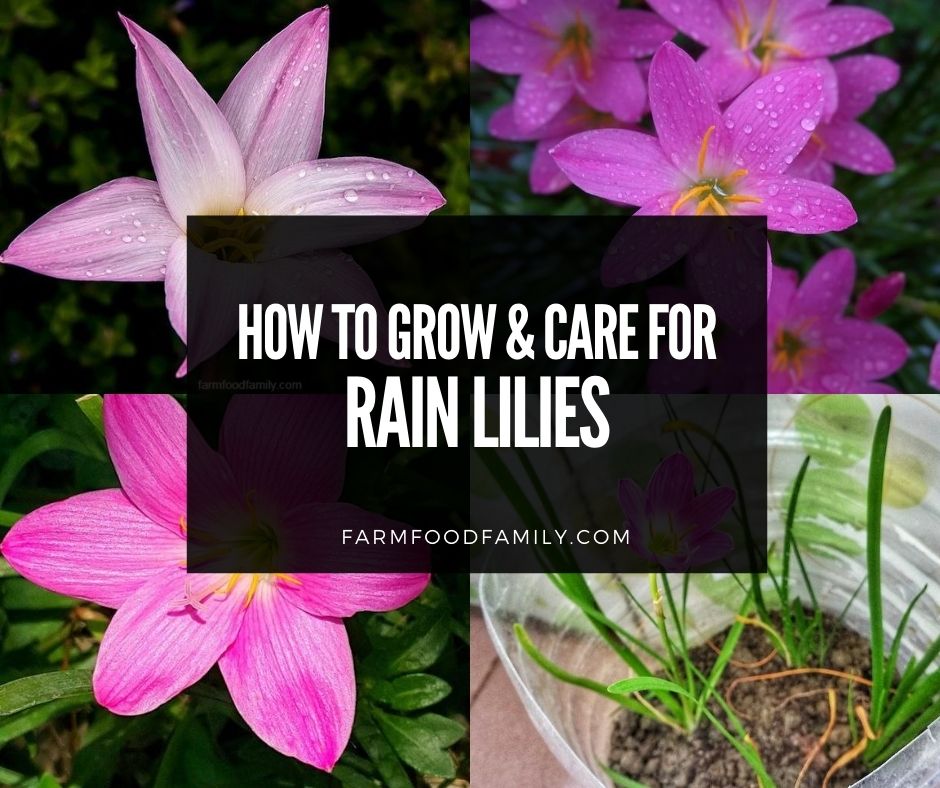Rain lilies, often overlooked but easy to grow, are showy, trouble-free and cheap enough to buy by the dozens-in short, the rain lily is easy to love.
Zephyranthes sp. or rain lilies, as they are more commonly known because of their tendency to burst into bloom after a rain, are a delight. A clump-forming perennial, they start small but when left undisturbed three years or more they spread, offering up a showy display in an otherwise drab summer garden.
White rain lilies are the most common, but they are readily available in other colors including pale pink, rosy pink, and yellow. Some ‘experts’ report that rain lilies are hardy in zones 8a-10b; others, mostly growers assert than they are hardy through zone 6.
Given that there microclimates that exist here and there across the world, that might explain the more the difference.
Rain Lilies are not expensive, so I planted a few here in zone 6b-7a now, and they came up in the spring just fine. I suggest that others try the same thing before they plant ALL their rain lilies and leave them in the ground over the winter.

Landscaping with Rain Lilies

Rain lilies can be incorporated into your landscape in so many ways: they make a wonderful edging at least in part because they look a lot like monkey grass, and when naturalized they are a showy sight.
They are beautiful as specimen plants, blended into mixed perennial beds, or grown in containers, herb gardens, or borders. Or you can simply push these little bulbs into the ground here and there; then forget them.
One day early next summer you’ll look out across your garden and there they’ll be, blooming as if fairies had sprinkled them there; that is why many people call them fairy bulbs.
Rain lilies are rather small—about 6” to 8” tall; some will grow as tall as 12”—so it is true that gardeners with limited growing space would do well to plant them. Actually, gardeners with small or large planting areas alike will love these lovely little lilies.
Rain lilies are at their best being planted amidst established plants, filling in bare spots here and there.
Their ‘blooming blitzes’ are another of their most charming features, alone enough to assure their growing popularity. And their colorful star-like flowers will be especially welcome in late summer when other flowers are fading. For all this, they require little in return.
Even for the gardener whose planting areas have no bare spots a couple dozen rain lily bulbs planted amidst a lackluster groundcover will make your garden ’pop’. Whether filling bare spots or sprucing up existing plantings, they’ll help a good garden look noticeably better with almost no effort on your part.
Spectacular effects can be achieved when rain lilies are used in mass plantings. Naturalizing rain lilies will be more likely to succeed when using those varieties that have the greatest potential for cold hardiness in your area. Remember that these little lilies will not survive in soggy soil whether naturalized or not.
Caring for Rain Lilies

Plant the bulbs immediately upon receipt since they resent being out of the ground for long periods. They do well when planted in raised beds or compost-enriched older borders. After planting, water them generously; roots and top growth develop when they receive the right amount of available warmth and moisture. Rain lilies thrive on regular summer watering but avoid over-watering them.
Rain lilies do well when they are in direct sunlight at least part of the day, so long as it’s not during the hottest hours. Feed the rain lily bulbs with an annual addition of compost or a blend of compost and mulch during the growing season.
When they are in bloom, rain lilies can be cut for small bouquets; it won’t hurt the plants. Otherwise you may want to enjoy them where they are. It’s important that you not cut off their foliage after they bloom until they are yellow—the sunlight provides nourishment to their bulbs for next year’s growth and flowering.
In very cold areas, rain lilies may go dormant over winter, but in most areas they are evergreen.
In cold areas, to save your rain lilies for next year, carefully dig the bulbs after the first frost, let them air dry, then store them in a cool location in paper bags taking care to leave the clumps of bulbs together. This will lessen the effect of their having been removed from the ground. Besides the bulbs need to rest for a few months before beginning the next growing cycle anyway.
Propagating Rain Lilies
These bulbs prefer to be left alone—a feature that is handy for the gardener! You will be rewarded with dramatic results when you allow large clumps to develop. If you want to divide them, do it in the fall right after flowering, when the plants begin to go dormant.
For gardeners in the cooler zones, where it is necessary to dig up the rain lilies bulbs and winter them over out of the ground, propagation is much easier. Carefully breaking apart the two or three year old clumps of bulbs will double or triple the number of bulbs you will have to plant next year and the joy you will get in return for your effort.

